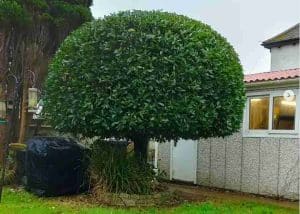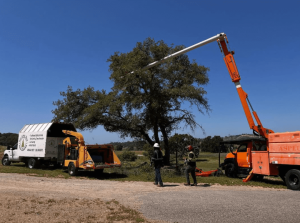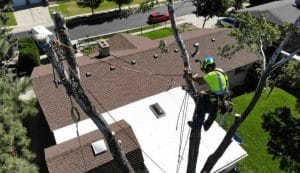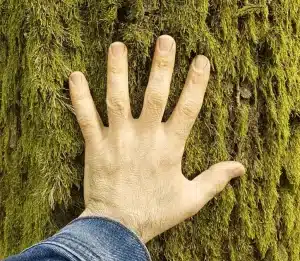Trimming a tree yourself means cutting away dead, overgrown, or dangerous branches to improve the tree’s health and make your yard safer and more attractive. You don’t need to be a professional to do it just a few tools, some safety basics, and a clear plan. One of the best methods for beginners is the three-cut technique, which helps you remove large limbs safely without tearing the bark. Whether you’re shaping up a backyard tree or preventing branches from hitting your roof, this guide breaks everything down into easy steps.
Keep reading to learn exactly when to trim, how to do it right, what tools to use, and the top mistakes to avoid—so you can get the job done confidently and safely.
Table of Contents
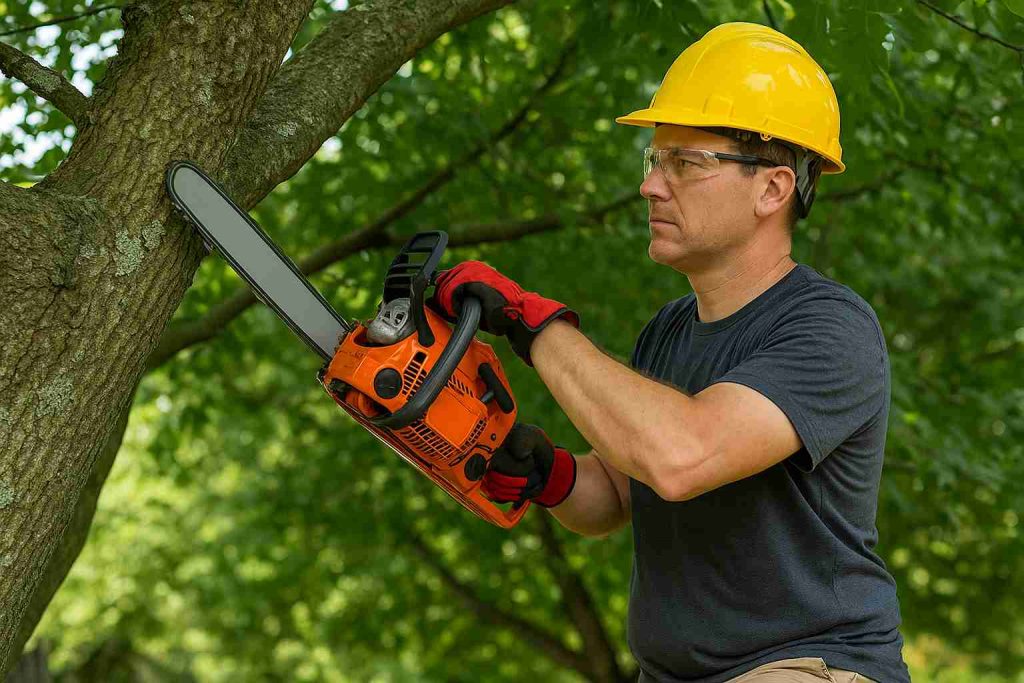
Why Trim a Tree?
Trimming a tree is more than just a chore it’s a smart, long-term move for the health of your tree, safety of your property, and beauty of your yard.
Here’s what regular trimming does for you:
- Keeps your tree healthy: Dead or diseased branches can infect other parts of the tree.
- Prevents damage: Storms or high winds can break weak limbs and cause property damage.
- Improves shape and balance: Especially important for young or ornamental trees.
- Makes your yard safer: Low-hanging limbs can be hazardous to people and pets.
- Boosts curb appeal: Well-maintained trees look great and add value to your home.
Is It Safe to Trim a Tree Yourself?
Yes but only if you follow some simple safety rules and stay within your skill level.
You should only trim a tree yourself if:
- The branches are reachable without climbing high.
- No power lines are near or above the tree.
- The trunk is stable and not cracked or leaning.
- You’re using proper tools (no dull saws or shaky ladders).
Never attempt DIY trimming if:
- You need to climb more than 10 feet.
- The limbs are close to electrical wires.
- The tree is too large or appears unstable.

Best Time of Year to Trim Trees
Timing matters when it comes to trimming trees.
Here’s a quick breakdown by season:
- Late Winter to Early Spring (Best Time): Trees are still dormant, which means less stress on the tree and less sap.
- Summer: Okay for shaping or removing small limbs.
- Fall: Avoid trimming—fungi and disease spread more easily during this season.
- Winter: Good for most trees, but be cautious with younger ones in very cold areas.
If you’ve Googled “when is the best time to trim a tree,” the answer is typically late winter to early spring—but always double-check based on your tree type and location.
Essential Tools for DIY Tree Trimming
You don’t need fancy equipment, but having the right tools makes the job easier and safer. Here’s your checklist:
| Tool | Purpose |
|---|---|
| Hand pruners | For small branches (under ½ inch thick) |
| Loppers | For medium branches (up to 1½ inches) |
| Pruning saw | For thicker limbs |
| Pole pruner | For high branches within 10–15 feet |
| Gloves | Protect your hands from splinters and cuts |
| Safety goggles | Shield your eyes from flying debris |
| Hard hat (optional) | If working under larger branches |
Basic Tree Trimming Rules to Follow
Before making your first cut, follow these golden rules to avoid harming your tree or yourself:
1. Start with Dead or Diseased Branches
These are the first to go. They’re easy to spot—brittle, discolored, or leafless even in the growing season.
2. Cut at the Right Angle
Trim just outside the branch collar (the bulge where the branch meets the trunk). Never cut flush to the trunk.
3. Don’t Overdo It
Only remove about 25% of the tree’s crown in one season. More than that can stress the tree.
4. Step Back Often
Check your progress every few cuts to make sure you’re not over-trimming or shaping it unevenly.
Step-by-Step: How to Trim a Tree Yourself
Let’s walk through a safe and simple tree trimming process.
Step 1: Inspect the Tree
Look for:
- Dead or broken limbs
- Branches growing toward the house or roof
- Crossed or rubbing limbs
- Areas blocking sunlight or views
Step 2: Plan Your Cuts
Decide which branches to remove and which to keep. Less is more—keep the tree’s natural shape in mind.
Step 3: Trim Small Branches First
Use hand pruners or loppers for anything under 1 inch. Make clean cuts to prevent bark tearing.
Step 4: Cut Larger Branches Safely
Use the three-cut method:
- First cut (undercut): About 6–12 inches from the trunk on the underside.
- Second cut (top cut): A few inches further out, cut from the top to remove the branch.
- Final cut: Remove the remaining stub just outside the branch collar.
This technique prevents the bark from ripping and injuring the trunk.
Step 5: Clean Up and Dispose
Remove cut branches promptly. You can compost smaller ones or check your local green waste disposal site for larger limbs.

What Not to Do When Trimming a Tree
Avoid these common mistakes:
- Never “top” a tree (cutting across the top to shorten it drastically). This harms the tree and causes weak growth.
- Don’t trim too close to the trunk. It slows healing and invites disease.
- Don’t use dull tools. Jagged cuts increase the chance of infection.
- Don’t trim during extreme heat or drought. Trees are already stressed.
- Avoid ladders unless absolutely necessary. Use a pole saw instead.
When Should You Call a Professional?
Some tree jobs are simply not safe or suitable for DIY. Call an expert if:
- Branches are within 10 feet of power lines.
- The tree leans or has a cracked trunk.
- You need to climb to trim.
- The tree is too large to see the full structure from the ground.
- You’re unsure what’s safe to cut.
Don’t take the risk if the situation looks unsafe.
How Tree Trimming Helps Your Yard Look Better
DIY tree trimming isn’t just about safety or health it’s about aesthetics too. Here’s how it benefits your outdoor space:
- Creates a clean, manicured look
- Allows more sunlight in your yard or garden
- Prevents branches from scratching your siding or roof
- Improves visibility if the tree blocks views or signage
- Boosts property value with better curb appeal

Final Thoughts: You Can Trim That Tree Yourself
You don’t have to be an expert or hire a pro to get great results. With the right tools, simple safety steps, and a clear plan, trimming your own tree is totally doable even if it’s your first time. A little effort goes a long way toward a healthier tree, a cleaner yard, and fewer problems down the road. Start small, take your time, and remember every clean cut brings your yard one step closer to looking its best.
FAQs
Can I trim a tree with just a chainsaw?
You can, but it’s not ideal for small to medium branches. A pruning saw gives more control.
How much of the tree can I trim without harming it?
No more than 25% of the crown per year. Less is better.
What if the branch falls wrong?
Use the three-cut method to control weight and direction. Always clear the area below first.
Is it okay to trim trees in summer?
Yes, but only light pruning. Avoid major trimming in extreme heat.
How can I tell if a branch is dead?
Snap it—if it’s dry and brittle with no green inside, it’s dead.
Will trimming save me money over time?
DIY trimming might seem cheaper, but mistakes, injuries, or damage can cost more. Hiring a pro often saves money and stress in the long term.

